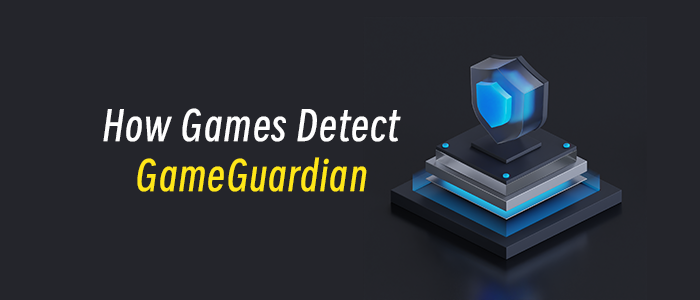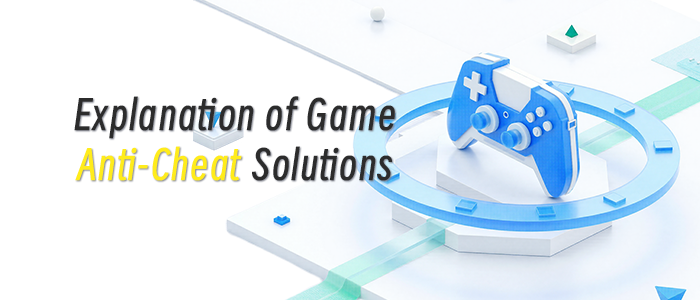Author: by Jeriaska
[In this interview, the developers behind Yakuza 4's art, music, and story talk with Gamasutra contributor and Nobuooo editor Jeriaska about crafting the acclaimed game's ensemble cast, dangerous but exciting environments, and more.] Composer Hidenori Shoji, music director of Sega's Yakuza series, has previously spoken on his role in the development of Yakuza 3 in an installment of GameSetWatch's Sound Current column. For this discussion, he is joined by three designers at Sega in a conversation centering on direction, writing, art and music for Yakuza 4. Jun Orihara is the director of the latest PlayStation 3 exclusive title in the Yakuza game series and has offered significant contributions to earlier releases in the franchise. Masayoshi Yokoyama has written scenarios for every installment in the Yakuza series, including the period piece Ryu ga Gotoku Kenzan!, which took place in early 17th century Kyoto. Kazuki Hosokawa was responsible for art direction on Yakuza 3 and Yakuza 4. The most significant departure of the open-world action game from its predecessors has been the inclusion of four playable characters, each with their own dedicated storylines. This discussion provides insights into the challenges surrounding this and other design decisions on the development of Yakuza 4.  Yakuza 4 is said to present a different experience of the fictional Kamurocho district than has been the case previously. How has expanding terrain to include new areas such as rooftops sought to change the feel of the in-game environment? Director Jun Orihara: Before Yakuza 4, Kamurocho had little in the way of elevation. There were no above ground areas for the player to explore. Over the course of development on Yakuza 4, one objective was to add an extra dimension to the landscape, and I would say we succeeded in that aim. You can now view Kamurocho from up above, as well as from underground. These latter areas offer a somewhat fantastical perspective that's not previously been explored. The underground environments developed for the game were intended to defy imagination, giving you the sense of being beneath a bustling urban district, providing added enjoyment for those already familiar with Kamurocho's surroundings. Art Director Kazuki Hosokawa: Opening up the playing field to rooftops and underground areas was a significant art design challenge. Simply creating a look for Kamurocho that took full advantage of the PlayStation 3's hardware capabilities put the design team's abilities to the test. When compared against Yakuza 3, I think players will find that there are many new discoveries to be made while exploring Kamurocho. Scenario Writer Masayoshi Yokoyama: Compared with regular old Kabukicho, Kamurocho is a magical place. Every time you visit there, some transformation has taken place. It's a place that tends to catch you off guard, because it's always changing. No matter how many times you visit there, you'll never form a comprehensive mental map of the city. In the five years between Yakuza 1 and Yakuza 4, the district has changed its shape many times. To keep that feeling fresh, researching actual shops and other locations on which the game is based has been key. KH: Luckily, in a nation as peaceful as Japan there are no existing locations that pose the kinds of danger you encounter routinely in Yakuza 4. As part of my research, I went to several locations, exploring alleyways behind stores. Straightaway I felt uneasy imagining the kinds of things that could take place in such out-of-the-way locations.
Yakuza 4 is said to present a different experience of the fictional Kamurocho district than has been the case previously. How has expanding terrain to include new areas such as rooftops sought to change the feel of the in-game environment? Director Jun Orihara: Before Yakuza 4, Kamurocho had little in the way of elevation. There were no above ground areas for the player to explore. Over the course of development on Yakuza 4, one objective was to add an extra dimension to the landscape, and I would say we succeeded in that aim. You can now view Kamurocho from up above, as well as from underground. These latter areas offer a somewhat fantastical perspective that's not previously been explored. The underground environments developed for the game were intended to defy imagination, giving you the sense of being beneath a bustling urban district, providing added enjoyment for those already familiar with Kamurocho's surroundings. Art Director Kazuki Hosokawa: Opening up the playing field to rooftops and underground areas was a significant art design challenge. Simply creating a look for Kamurocho that took full advantage of the PlayStation 3's hardware capabilities put the design team's abilities to the test. When compared against Yakuza 3, I think players will find that there are many new discoveries to be made while exploring Kamurocho. Scenario Writer Masayoshi Yokoyama: Compared with regular old Kabukicho, Kamurocho is a magical place. Every time you visit there, some transformation has taken place. It's a place that tends to catch you off guard, because it's always changing. No matter how many times you visit there, you'll never form a comprehensive mental map of the city. In the five years between Yakuza 1 and Yakuza 4, the district has changed its shape many times. To keep that feeling fresh, researching actual shops and other locations on which the game is based has been key. KH: Luckily, in a nation as peaceful as Japan there are no existing locations that pose the kinds of danger you encounter routinely in Yakuza 4. As part of my research, I went to several locations, exploring alleyways behind stores. Straightaway I felt uneasy imagining the kinds of things that could take place in such out-of-the-way locations.  Masayoshi Yokoyama, Hidenori Shoji, Jun Orihara and Kazuki Hosokawa at Sega headquarters How would you describe the differences between the four protagonists? Has having four playable characters instead of one allowed for new opportunities in terms of the sound design and scenario? JO: Up until this title, Kazuma Kiryu was the only playable character. Together, we as a team had a sturdy understanding of his personality. Introducing three new protagonists, we were tasked with forming strong new archetypes from the ground up, from their battle styles to their character arcs. Based on the scenarios written by Yokoyama, we branched out into developing multiple side stories. We investigated questions like, "What would this character say in this situation? Would this be a likely response from this person?" Starting out, none of us could say for sure how these newly introduced characters would behave in certain situations. It was among the elements of greatest uncertainty surrounding the game's development. Music Director Hidenori Shoji: Throughout development, emphasis was placed on differentiating each of these characters in a variety of ways. Sound design was one of those aspects. As Orihara mentioned earlier, the game introduces individualized battle techniques, so the background tracks called for varied styles crafted by assorted music composers. On this game, individual composers were assigned to the Tanimura, Akiyama, Kiryu and Saejima scenarios and scored those characters' specific cutscenes. For instance, I was the one writing for Saejima's storyline. Dividing up the protagonists between composers created a very natural feeling of contrast between the various plotlines. Was there any concern that in diverting attention away from the character of Kazuma Kiryu that the game would lose the feel of a Yakuza series installment? KH: Because all previous titles have had Kazuma as the sole playable character, a lot of effort has gone into making him attractive to our audience. Attending to four playable characters, we didn't want our attention to detail to be divided, so we resolved to put forth 400% of our effort so that the potential for each character could be fully realized. Kiryu's likability has been important for players to relate to the series, so it was certainly a tall order for the character artists to create additional protagonists that were every bit as interesting in their own right.
Masayoshi Yokoyama, Hidenori Shoji, Jun Orihara and Kazuki Hosokawa at Sega headquarters How would you describe the differences between the four protagonists? Has having four playable characters instead of one allowed for new opportunities in terms of the sound design and scenario? JO: Up until this title, Kazuma Kiryu was the only playable character. Together, we as a team had a sturdy understanding of his personality. Introducing three new protagonists, we were tasked with forming strong new archetypes from the ground up, from their battle styles to their character arcs. Based on the scenarios written by Yokoyama, we branched out into developing multiple side stories. We investigated questions like, "What would this character say in this situation? Would this be a likely response from this person?" Starting out, none of us could say for sure how these newly introduced characters would behave in certain situations. It was among the elements of greatest uncertainty surrounding the game's development. Music Director Hidenori Shoji: Throughout development, emphasis was placed on differentiating each of these characters in a variety of ways. Sound design was one of those aspects. As Orihara mentioned earlier, the game introduces individualized battle techniques, so the background tracks called for varied styles crafted by assorted music composers. On this game, individual composers were assigned to the Tanimura, Akiyama, Kiryu and Saejima scenarios and scored those characters' specific cutscenes. For instance, I was the one writing for Saejima's storyline. Dividing up the protagonists between composers created a very natural feeling of contrast between the various plotlines. Was there any concern that in diverting attention away from the character of Kazuma Kiryu that the game would lose the feel of a Yakuza series installment? KH: Because all previous titles have had Kazuma as the sole playable character, a lot of effort has gone into making him attractive to our audience. Attending to four playable characters, we didn't want our attention to detail to be divided, so we resolved to put forth 400% of our effort so that the potential for each character could be fully realized. Kiryu's likability has been important for players to relate to the series, so it was certainly a tall order for the character artists to create additional protagonists that were every bit as interesting in their own right.  JO: Kazuma, having persisted throughout the series, has come to be seen as indestructible. By now we know he can do just about anything. The other three characters each have distinguishing play styles: Akiyama brings speed. Saejima, capable of lifting a motobike above his head, brings strength. Tanimura, a detective who has mastered the ancient martial art of "Ko-budo," brings gracefulness. Kazuma appears playable last, reinforcing his status as the central character of the series. Tanimura's abilities have been designed to appeal to hardcore gamers. His passive battle style is activated upon being attacked by opponents. You probably won't be able to fully utilize all of his techniques in the beginning, but the more you play around with Tanimura's passive battle system, the more enjoyable it becomes. KH: You might be thrown at first to find that Akiyama can score dash combos so easily, or that Saejima has such advantages in strength. However, once you've become accustomed to the particularities of each play style, these distinctions become more enjoyable. MY: Certainly there are examples of games that have successfully introduced ensemble casts, like for instance Heavy Rain. Even in titles that have an emphasis on storyline, it's no small task to elicit sympathy for a game character. It really comes down to how comfortable the player is with putting themselves in the shoes of your characters. Taking on that challenge was actually a little nerve-wracking. Nonetheless, now that some time has gone by, it seems to me the structure of the story was developed in such a way that it unfolds smoothly. The narrative is kicked off with Akiyama, loaning funds to clients who have no credit elsewhere. Then the retired yakuza Saejima is introduced, followed by the detective Tanimura, and finally Kazuma. Witnessing those character arcs defined with a degree of nuance boosted my confidence in the overall presentation of the storyline. JO: Kamurocho is accessible to a different degree by each of the central characters. Tanimura grew up in an area called Little Asia and therefore has full access to it. Meanwhile, as a fugitive, Saejima must stick to the underground passages and rooftops to avoid capture by the police. An important element of Yakuza 4 is that both the play styles and the backstories of the protagonists impact the way they relate to their surroundings.
JO: Kazuma, having persisted throughout the series, has come to be seen as indestructible. By now we know he can do just about anything. The other three characters each have distinguishing play styles: Akiyama brings speed. Saejima, capable of lifting a motobike above his head, brings strength. Tanimura, a detective who has mastered the ancient martial art of "Ko-budo," brings gracefulness. Kazuma appears playable last, reinforcing his status as the central character of the series. Tanimura's abilities have been designed to appeal to hardcore gamers. His passive battle style is activated upon being attacked by opponents. You probably won't be able to fully utilize all of his techniques in the beginning, but the more you play around with Tanimura's passive battle system, the more enjoyable it becomes. KH: You might be thrown at first to find that Akiyama can score dash combos so easily, or that Saejima has such advantages in strength. However, once you've become accustomed to the particularities of each play style, these distinctions become more enjoyable. MY: Certainly there are examples of games that have successfully introduced ensemble casts, like for instance Heavy Rain. Even in titles that have an emphasis on storyline, it's no small task to elicit sympathy for a game character. It really comes down to how comfortable the player is with putting themselves in the shoes of your characters. Taking on that challenge was actually a little nerve-wracking. Nonetheless, now that some time has gone by, it seems to me the structure of the story was developed in such a way that it unfolds smoothly. The narrative is kicked off with Akiyama, loaning funds to clients who have no credit elsewhere. Then the retired yakuza Saejima is introduced, followed by the detective Tanimura, and finally Kazuma. Witnessing those character arcs defined with a degree of nuance boosted my confidence in the overall presentation of the storyline. JO: Kamurocho is accessible to a different degree by each of the central characters. Tanimura grew up in an area called Little Asia and therefore has full access to it. Meanwhile, as a fugitive, Saejima must stick to the underground passages and rooftops to avoid capture by the police. An important element of Yakuza 4 is that both the play styles and the backstories of the protagonists impact the way they relate to their surroundings.  In your observation, how has the Yakuza game series changed over time? MY: I think the biggest change has been that the motivation of our development team and staff has increased over time. For one, as the series has grown in popularity in Japan, we've faced increasingly higher expectations. Initially Yakuza was compared with other domestic titles, but more recently a greater number of direct comparisons have been made with international phenomena like the Grand Theft Auto series. It's not a shift that has compelled us to compete with GTA. Our emphasis has been on preserving our vision for the franchise while upping the quality. The world of Yakuza is inhabited by outlaws. It's natural to assume that these games glorify a mafioso mentality. In actuality, Kazuma's personality and his image of Kamurocho paints a different kind of picture. Take for instance that the character will never assault someone randomly or engage in violence unless directly provoked. The game invites players to choose from among actions that Kazuma's sense of fairness will tolerate. JO: That's a good point. In the first Yakuza, the tagline here in Japan was "Anyone can become a man who fights with strength." The phrase was left a bit ambiguous because it could either be taken to mean "a man who fights" or "a man with strength." The former emphasized the kinds of lawless street fights that occur in the game. However, "a man with strength" would never stoop to exercising violence against an ordinary bystander, which is the strength of Kazuma as a character. That philosophy has always been at the heart of the game design. KH: From the standpoint of the art design, the biggest shift has been in transitioning from the PlayStation 2 to PlayStation 3 hardware. Shifting from a locked camera angle to tracking shots during cutscenes has led to higher development costs, but it has also invited a broader range of possibilities for visual expression. HS: As you might expect, hardware changes have had a profound impact on the sound design as well. While 5.1 surround sound was an option on the PlayStation 2, it became the standard format for the PlayStation 3. As far as preserving a style for the series is concerned, as Yokoyama mentioned earlier it's important that there is a like-minded design philosophy shared among members of the team. For instance, it would be jarring were the sound department to decide that in the heat of battle Kazuma should shout, "Die, scum!" It's already been established that the character would never allow himself to utter such a thing. If in every subtle detail of the game's design you can protect those principles, then it's possible to preserve the essence of a series even while it's undergoing phenomenal changes.
In your observation, how has the Yakuza game series changed over time? MY: I think the biggest change has been that the motivation of our development team and staff has increased over time. For one, as the series has grown in popularity in Japan, we've faced increasingly higher expectations. Initially Yakuza was compared with other domestic titles, but more recently a greater number of direct comparisons have been made with international phenomena like the Grand Theft Auto series. It's not a shift that has compelled us to compete with GTA. Our emphasis has been on preserving our vision for the franchise while upping the quality. The world of Yakuza is inhabited by outlaws. It's natural to assume that these games glorify a mafioso mentality. In actuality, Kazuma's personality and his image of Kamurocho paints a different kind of picture. Take for instance that the character will never assault someone randomly or engage in violence unless directly provoked. The game invites players to choose from among actions that Kazuma's sense of fairness will tolerate. JO: That's a good point. In the first Yakuza, the tagline here in Japan was "Anyone can become a man who fights with strength." The phrase was left a bit ambiguous because it could either be taken to mean "a man who fights" or "a man with strength." The former emphasized the kinds of lawless street fights that occur in the game. However, "a man with strength" would never stoop to exercising violence against an ordinary bystander, which is the strength of Kazuma as a character. That philosophy has always been at the heart of the game design. KH: From the standpoint of the art design, the biggest shift has been in transitioning from the PlayStation 2 to PlayStation 3 hardware. Shifting from a locked camera angle to tracking shots during cutscenes has led to higher development costs, but it has also invited a broader range of possibilities for visual expression. HS: As you might expect, hardware changes have had a profound impact on the sound design as well. While 5.1 surround sound was an option on the PlayStation 2, it became the standard format for the PlayStation 3. As far as preserving a style for the series is concerned, as Yokoyama mentioned earlier it's important that there is a like-minded design philosophy shared among members of the team. For instance, it would be jarring were the sound department to decide that in the heat of battle Kazuma should shout, "Die, scum!" It's already been established that the character would never allow himself to utter such a thing. If in every subtle detail of the game's design you can protect those principles, then it's possible to preserve the essence of a series even while it's undergoing phenomenal changes.  How does the design of Yakuza 4 attempt to maintain a balance between realism and fantasy in a way that creates engaging gameplay? MY: This might be difficult to understand for those outside of the Japanese fanbase, but taking on the persona of Kazuma Kiryu is alluring to many players. Playing as Kazuma is fun because you don't get to behave that way in real life. In developing the new protagonists, they all can be described as strong, but they also have some fallible qualities that are foreign to a superstar like Kiryu. They are more susceptible to vices or run-of-the-mill behavior. A thought experiment that inspired several episodes of the game was to ask what would happen if ordinary individuals like us here in this room were thrown into the world of Kamurocho. On the surface, there are elements of the storyline that might appear obscure. Not everyone is familiar with the structure of yakuza organizations, like what it means to be second or third tier. But in the end, even if you happen to be from the United States or Europe, the way people think is not so different. "What if you happened upon a million dollars in unmarked bills?" You take a scenario like that and the emotions resulting from that thought experiment are accessible to all of us. An exploration of these kinds of universal themes is certainly something I am interested in sharing with an overseas audience. KH: The art design of the Yakuza series is rooted in the endeavor to anchor Kamurocho in a sense of reality. This is trickier than it sounds. For instance, lending objects a feeling of authenticity isn't as simple as replicating naturally occurring things exactly as they appear. It's not so much about recreating reality as lending a sense of verisimilitude to the illusion. Allow me to explain by taking the mundane example of an ashtray. There is a design of an ashtray that's so common that people within Japan can easily recognize it as an ashtray. However, the truth of the matter is that all the real ashtrays out there have more distinguishing features than our prototypical ashtray. So if you fail to take into account certain motif choices that give your objects some character, they'll lack a sense of authenticity. MH: Isn't it often mentioned that Kamurocho is attempting to replicate the real world? For instance, through promotional tie-ins there are actual stores that exist in reality that appear in the game. However, producing a carbon copy of what's out there already wouldn't be as interesting. There isn't a Millenium Tower located in the heart of the city, and would it realistically be possible to construct an underground city like the one teaming beneath Kamurocho? We stretch our imaginations and exaggerate existing phenomena because that's going to be more interesting to players who are already accustomed to daily life in Tokyo. We have no idea whether real yakuza think the game is accurate or completely absurd, but we definitely want to steer clear of creating something so real it's bland. [Yakuza 3 was fact-checked by real yakuza by way of Boing Boing in April 2010. The game received a largely favorable review, though the fight scenes were said to be unrealistic.]
How does the design of Yakuza 4 attempt to maintain a balance between realism and fantasy in a way that creates engaging gameplay? MY: This might be difficult to understand for those outside of the Japanese fanbase, but taking on the persona of Kazuma Kiryu is alluring to many players. Playing as Kazuma is fun because you don't get to behave that way in real life. In developing the new protagonists, they all can be described as strong, but they also have some fallible qualities that are foreign to a superstar like Kiryu. They are more susceptible to vices or run-of-the-mill behavior. A thought experiment that inspired several episodes of the game was to ask what would happen if ordinary individuals like us here in this room were thrown into the world of Kamurocho. On the surface, there are elements of the storyline that might appear obscure. Not everyone is familiar with the structure of yakuza organizations, like what it means to be second or third tier. But in the end, even if you happen to be from the United States or Europe, the way people think is not so different. "What if you happened upon a million dollars in unmarked bills?" You take a scenario like that and the emotions resulting from that thought experiment are accessible to all of us. An exploration of these kinds of universal themes is certainly something I am interested in sharing with an overseas audience. KH: The art design of the Yakuza series is rooted in the endeavor to anchor Kamurocho in a sense of reality. This is trickier than it sounds. For instance, lending objects a feeling of authenticity isn't as simple as replicating naturally occurring things exactly as they appear. It's not so much about recreating reality as lending a sense of verisimilitude to the illusion. Allow me to explain by taking the mundane example of an ashtray. There is a design of an ashtray that's so common that people within Japan can easily recognize it as an ashtray. However, the truth of the matter is that all the real ashtrays out there have more distinguishing features than our prototypical ashtray. So if you fail to take into account certain motif choices that give your objects some character, they'll lack a sense of authenticity. MH: Isn't it often mentioned that Kamurocho is attempting to replicate the real world? For instance, through promotional tie-ins there are actual stores that exist in reality that appear in the game. However, producing a carbon copy of what's out there already wouldn't be as interesting. There isn't a Millenium Tower located in the heart of the city, and would it realistically be possible to construct an underground city like the one teaming beneath Kamurocho? We stretch our imaginations and exaggerate existing phenomena because that's going to be more interesting to players who are already accustomed to daily life in Tokyo. We have no idea whether real yakuza think the game is accurate or completely absurd, but we definitely want to steer clear of creating something so real it's bland. [Yakuza 3 was fact-checked by real yakuza by way of Boing Boing in April 2010. The game received a largely favorable review, though the fight scenes were said to be unrealistic.]
No tags.

























